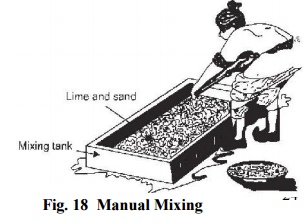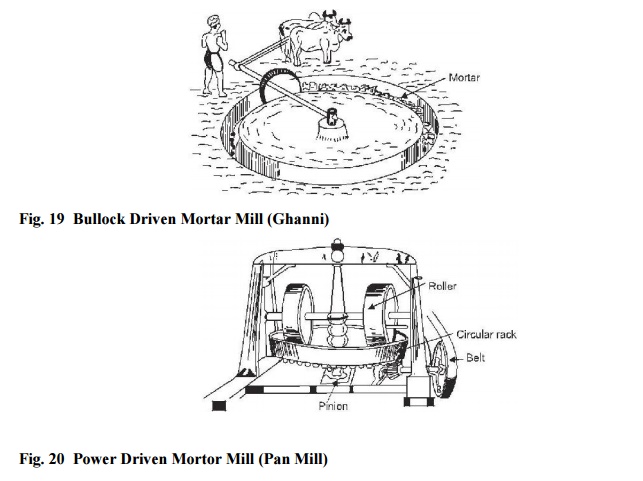Chapter: Civil : Construction Materials: Lime, Cement, Aggregates, Mortar
Lime Mortar

Lime Mortar
Lime mortar is made by mixing
lime, sand and water. Lime used for mortar may be fat lime (quick or hydrated
lime) or hydraulic lime. Fat lime has high calcium oxide content. Its hardening
depends on loss of water and absorption of carbon dioxide from the atmosphere
and possible recrystallisation in due course. Hydraulic lime contains silica,
alumina and iron oxide in small quantities. When mixed with water it forms
putty or mortar having the property of setting and hardening under water.
Slaked fat lime is used to prepare mortar for
plastering, while hydraulic lime is used for masonry construction and are most
suitable for construction of chimneys and lightly loaded superstructure of
buildings. The mix proportions of lime mortar for various types of works are
given in Table 12.2.
Notes:1. Sand in lime
mortar is an adulterant, and reduces its shrinkage. Lime mortar becomes porous
allowing air to penetrate and helps the mortar in hardening.
2. Lime mortar is not suitable for water-logged
areas and damp situations.
Lime mortars have plasticity and
placability, good cohesion with other surfacings and little shrinkage. They
harden and develop strength very slowly continuously gaining strength over long
period. Fat lime mortars do not set but stiffen only as water is lost by
absorption (by masonry units) and evaporation. The gain in strength is a very
slow reaction of lime with carbon dioxide absorbed from air.

Preparation
Manual Mixing Lime and sand in required quantities
are placed on an impervious floor or in a tank (Fig. 18). The constituents are
thoroughly mixed dry by turning them up and down with spades. Water is added
and mixing is done again with spades till mortar of uniform colour and
consistency is obtained.
Mill Mixing Mills used for preparing lime mortars
in undeveloped countries may be a chakki or ghanni run by bullocks (Fig. 18)
while a pan mill (Fig. 19) is used in developed countries. In the case of
ghanni the required quantity of ingredients in the form of putty is put in the
trench and grinding for 100 to 200 revolutions is carried out by moving stone
roller. The operation takes about 2 to 3 hours for each batch of mix; the time
required in a Pan mill is much less.

Precautions Lime mortar or putty
should be kept moist till use and in no case its drying is allowed. The mortar
made of hydraulic lime should be consumed within one day and that with fat lime
within 2-3 days.
Related Topics